Review for Shikabane Hime: Corpse Princess - Part 2 (2 Discs)
Introduction
The concluding half of Shikabane Hime arrives in the UK courtesy of Manga Entertainment, which means more than half of their output for the month of August will be saturated with the undead. Zombies in Shikabane Hime, zombies in High School of the Dead, vampires in Vampire Knight Guilty, and a devil in Black Butler. If any of the cast of K-On and Sekirei turns out to be succubae or werewolves, we may have a full house. Either way, don't approach an anime emporium this month without holy water, crucifixes, garlic, stakes, silver bullets and bibles in hand.
If someone dies with strong, overpowering regrets and obsessions, then that death isn't permanent, and that corpse rises as a Shikabane, fuelled purely by hatred, and preying on humans. The Kougon sect exists to combat this, but the only thing that can destroy a Shikabane is another Shikabane. So it is that the monks of the Kougon sect seek out young girls who die before their time, overwhelmed by regret. Before they can turn into monsters, the monks form contracts with them, enabling them to maintain some semblance of humanity, in exchange for the newly formed Shikabane Hime to fight and destroy Shikabane. The upside of the contract is that if the Shikabane Hime manage to destroy 108 Shikabane, then their passage to heaven, a peaceful death will be assured.
Ouri Kagami wasn't meant to know about any of this, even though a Kougon monk named Keisei Tagami adopted him. Keisei tried his hardest to keep his duties as a monk separate to the orphanage he runs where Ouri was brought up. But from the first moment that Ouri came to live there, he's had an unnatural fascination with death, has been able to sense the supernatural. Indeed it was the spectre of a cat that only he could see that led him to the temple one night, where he saw his brother Keisei bring the corpse of a young girl back to life. Ever since then, Keisei would often come home bruised and bloodied, and making excuses for his dishevelled state.
In the previous collection, Ouri collided head first with the world of the Shikabane Hime and the Kougon sect, when he became involved with Makina Hoshimura, the Shikabane Hime contracted to Ouri's brother. His involvement raised the suspicions of the Kougon organisation, which frowns on a 'normal' person wandering into their world. It came at the worst possible time, coinciding with the return of the renegade monk Akasha, who was putting into action a twisted plan to rid the world of the Shikabane Hime and the Kougon monks. On top of that, the Seven Stars reappeared, an organisation of Shikabane whose plans are far more long reaching and insidious than the general bloodlust that drives other Shikabane. The Seven Stars were the monsters that murdered Makina Hoshimura and her family, and the sole reason that Makina became a Shikabane Hime, contracted with Keisei, was never to get into heaven. She wants to find the Seven Stars and kill them all.
SPOILERS for the first season ensue… as Shikabane Hime Kuro takes place six months after the end of the previous collection, when Akasha and the Seven Stars' insidious plan prevailed. They attacked the orphanage, and Keisei, trying to protect the children, Makina, and Ouri fell in battle. Faced with the prospect of seeing Makina turn into a Shikabane, Keisei asked Ouri to take over the contract and become her monk. At the start of this volume, Ouri has been up in the mountains training, but regrets for Keisei have overwhelmed Makina, as has a refusal to accept Ouri as a replacement. The normally brief period of purification has stretched out for months, and dark spirits threaten to overwhelm Makina. The monks of the Kougon Sect are certain that she is cursed, that she can never be a Shikabane Hime again, and are preparing to execute her. At the same time, the Seven Stars see her as a key part of their plan, and with Akasha's help get ready to assault the Purification chamber. Can Ouri get back in time to rescue Makina?
Shikabane Hime was originally released as two series, Shikabane Hime Aka, and Shikabane Hime Kuro, Red and Black, but for the US release, Funimation opted for the literal translation of Shikabane Hime to the less than elegant Corpse Princess and released it in two 2-disc sets. That's how Manga Entertainment are doing it too, but they at least have compromised on the title, in the UK it will be released as Shikabane Hime: Corpse Princess.
This second collection contains the twelve episodes of Shikabane Hime Kuro, as well as a thirteenth direct to DVD OVA episode, spread across two discs as follows.
Disc 1
14. Path of Light
15. My Enemy
16. Beloved Aberration
17. Itsuki's Form
18. Nature and Regrets
19. Monster Named Happiness
20. Mundane Wish
Disc 2
21. My Mother was Defiled
22. The Value of the Living
23. To the Other Side of Hell
24. One Hundred and Eight Lies
25. Beyond The Dead
26. Even So, As a Person
Picture
Shikabane Hime gets a 1.78:1 anamorphic transfer. It's a native PAL transfer courtesy of Madman in Australia, one that does the animation full justice in bringing out the complexity and indeed the beauty of some of the scenes. Studio Gainax are a little predictable with the character designs, simple but memorable, and typical of most anime. They also wheel out the full fan service when it comes to the various Shikabane Hime, knowing full well what the audience for this show is likely to be. But Shikabane Hime is a moody and dark tale, and that is reflected in the style of the animation, with some seriously atmospheric and edgy scenes. The animation is top notch, fluid and vibrant, with the action sequences for once living up to the effort put into the opening sequence used to sell the show. The image is clear and sharp throughout, compression artefacts are kept to a minimum, and any grain applied to the image is simply a matter of creative choice. Shikabane Hime is a seriously fine looking series.
Sound
You have the choice between DD 5.1 English and DD 2.0 Japanese, along with optional translated subtitles and a signs only track. I always opt for the original language track, but this time I had thrice the reason to do so, as this series offers a Yui Horie overload, she plays three roles in the show. That said, Shikabane Hime is one of the few shows that I would be happy watching in either language. From what I sampled of the dub, about an episode's worth, the English audio track holds up very well against the Japanese dub, and given that Shikabane Hime is a jargon heavy show, it's even better if an excess of subtitling can be too distracting. Besides, the 5.1 remix is an exceptionally decent one for an anime show, doing much more than just simply throwing the music and sound effects to the rears. There's some nice, atmospheric placement of effects that really bring across the supernatural elements of the show, and highlights the many action sequences. Shikabane Hime also gets some rousing theme songs from the Japanese group Angela, which for once aren't at odds with the tone of the story.
I did notice a missing line of subtitles in the preview for episode 17.
Extras
The discs present their content with static menus, and jacket pictures for those with capable players.
The extra features are all on the second disc, the most substantial being the episode 24 commentary, which sees ADR director and voice of Keisei, J. Michael Tatum, voice of Hokuto, Brina Palencia, and voice of Akasha, Josh Grelle chat about the show, the cast, the recording process, and have a lot of fun watching the episode.
You also get the textless opening song, and two of the textless closings. For those of you who want to hear what difference a 4% PAL speedup makes to the pitch of the audio, listen to one of the textless credit sequences, which are presented as NTSC-PAL conversions, and then listen to the same sequence in an episode on the disc. It makes a fair bit of difference. I only notice it when I hear the two side by side though.
Conclusion
This isn't the first time I've had to dust off the Jimmy Greaves cliché for an anime show this year, and I get the feeling that it won't be the last. But it really is a game of two halves, and once again with an anime show, it's the second half that turns out to be the disappointment. I've had that disappointment with Casshern Sins, and now it's the turn of Shikabane Hime, but with this show, it really is as if someone just flicked a switch at episode 13, and said goodbye to the creativity, originality, and promise that the first half showed. That first half had fan service and clichés, but it also had a very engaging story, interesting characters, and had found a perfect balance between rib-tickling comedy and kick in the guts drama. It's as if the creators of the second half forgot completely what they were doing. The same ingredients are there, but the end result is a somewhat unpalatable mess, rather than the sweet concoction they had confected earlier. There are four problems with Shikabane Hime Kuro, the second half of Corpse Princess. First, there is the time jump in the storyline, then there is the overdose of fan service, there is the unbalanced storytelling, and finally there is the end of the show.
The time jump is perhaps the worst. The first half ended with a major character death, a game-changing event in the storyline. The start of the second half pushed the story six months ahead in time. I've seen this before in Moon Phase. A character death followed by a six-month gap... It basically lets the writers of the hook, so they don't have to show the characters going through the grieving process, they don't have to get heavy, and realistic with character drama and growth, they can jump ahead to the point where everyone has come to terms with what has happened, and only really have the vestiges of the experience to deal with. They are the thoughts of revenge, or inklings of guilt that are necessary to the plot, although not necessary to the character. When we catch up, Ouri's in the middle of his training as a monk, and it's only Makina who can't come to terms with events, requiring Ouri to help heal her. We as the audience have to accept on faith that the villains of the piece, the Seven Stars and Akasha the renegade monk have been twiddling their thumbs, or playing tiddlywinks for six months waiting for us to catch up.
Close behind is the excessive fan service. When you watch the opening credits for Shikabane Hime, the exaggerated aspects of some of the female characters is pretty in your face, as is Makina's apparent disdain for underwear. Consequently, Shikabane Hime is not the sort of show that shies away from catering for the teen male demographic. For the second half, where the story gets darker, more serious, more ominous, it's as if they decided to balance that all out by just adding more and more fan service. Crotch shots and booby shots abound, T & A in your face as much as possible, and they even introduce two new characters that are devoted to such silliness. There's a perverted monk named Umehara who makes Keisei look like… well a monk, while his Shikabane Hime named Flesh Backbone is a foreign otaku who died in Akihabara, and it's her obsession for otaku culture that kept her undead. Umehara's methodology for training his Shikabane Hime is to try and sneak up on them while they are bathing. And yes, Flesh's introduction in the show is accompanied by a sproingy boingy boob sound effect.
The change in story structure is probably the least important, and given that the focus is now on the Seven Stars and Ouri and Makina, and we know more about this world, the switch away from episodic storytelling is even understandable. The trouble is that it takes a devil of a time to get to the meat of the story, the interesting stuff with the Seven Stars and their plans to destroy the Kougon sect. Instead the story freewheels for about five episodes dealing with Ouri's training, and Makina's curse. The show had already skipped six months of time in between the two halves of the series; why not skip a tad further? Instead we get a lot of internal navel gazing narrative, some more exposition about how the Kougon sect works, and the tortured bonds between a monk and his Shikabane Hime, all the stuff that would have been a lot more effective just after that major character death, instead of six months later.
Perhaps the most annoying thing about Shikabane Hime is the end. It doesn't. It just rolls the end credits mid-fight sequence, and you never how it concludes. When the show initially streamed, there was some speculation over whether it would be resolved in the direct to DVD OVA episode. Well we get that OVA episode here, it's labelled episode 26, Even So, As a Person, and it certainly doesn't conclude the series. In fact it's a prequel episode that tells the story of how the monk Isaki became bonded with his Shikabane Hime Minai. It's actually a very good episode, as it gives that cold impersonal and doomed relationship a lot of context, and it's a deft bit of storytelling. But it is a prequel episode to the series, not an epilogue, and as such it is totally inconsequential.
It's a dreadful shame, because behind this litany of disappointment is a really good story. The relationships between the characters, the motivations of the Seven Stars and the renegade monk Akasha, the conspiracies and secrets of the Kougon Sect and its adherents, it's all really compelling stuff. From episode 18 onwards, the Seven Stars really put their plans in motion, first trying to twist Makina's feelings by making it appear that someone she cared about has come back as a Shikabane, and then corrupting one of Ouri's school friends. They then reveal the truth about Ouri's past to him, while at the same time kidnapping Makina and making her face their strongest number, Hokuto in combat. When their grand plan to raise an army of Shikabane goes into effect, with shades of 9/11 in their methods, I'd defy anyone not to get a chill down their spine. With top quality animation, interesting central characters, and a story that gets better and better the further you get into the show, watching Shikabane Hime Part 2 certainly isn't a chore. It's a story that needs an end though.
How can something be both brilliant and rubbish at the same time? I haven't the faintest idea but I hold up Shikabane Hime Part 2 as a prime example. It squanders most of the good work done by part 1, with ham fisted and unbalanced storytelling, and it's overburdened with fan service to the point where you have to work at getting to the decent story, the same way that you have to deal with a stubborn brazil nut. By itself, part 2 is an entertaining disappointment, in conjunction with part 1, Shikabane Hime becomes enjoyable, but forgettable nonsense. Don't be put off from buying it, just don't expect high art.
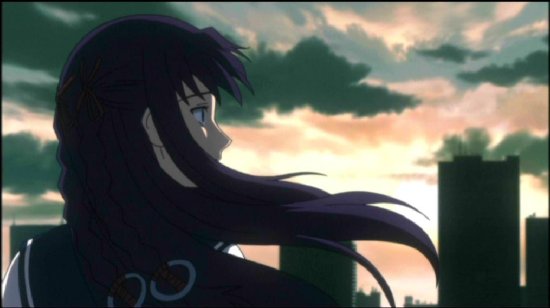
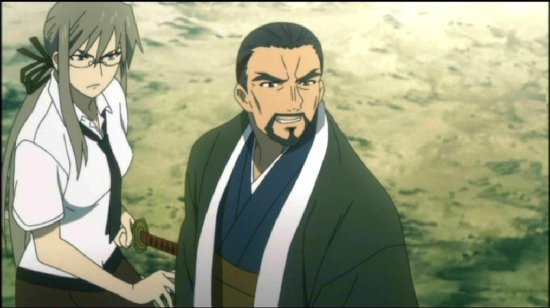
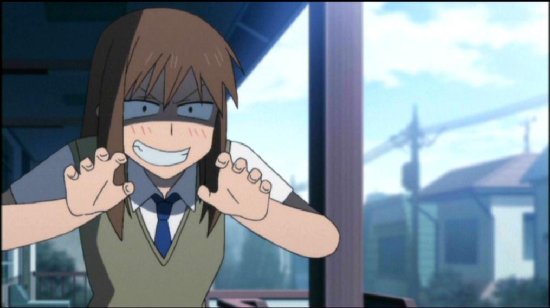
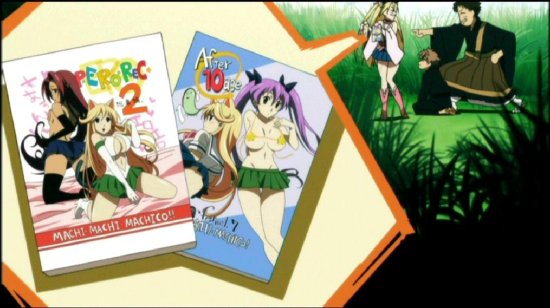
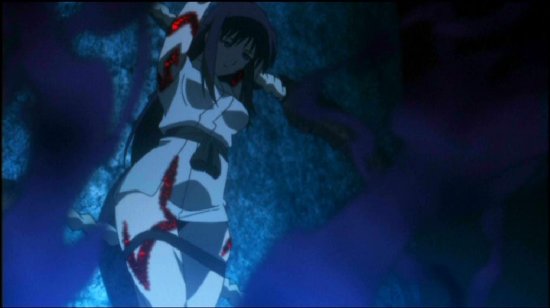
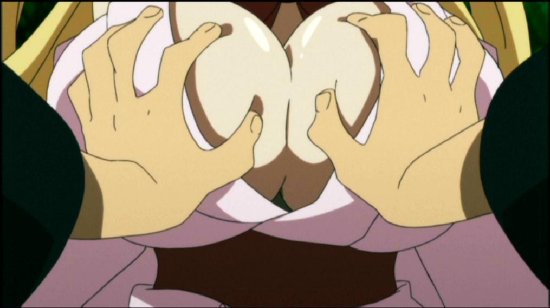
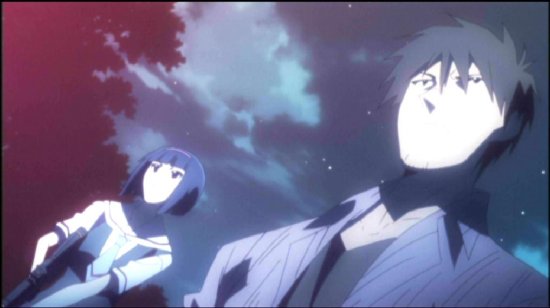
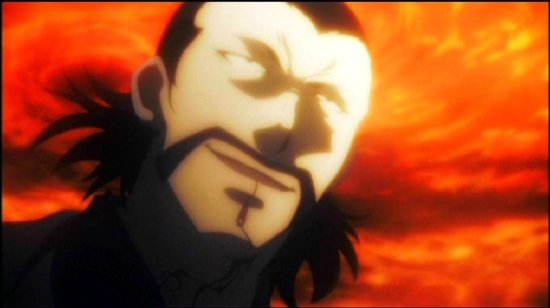

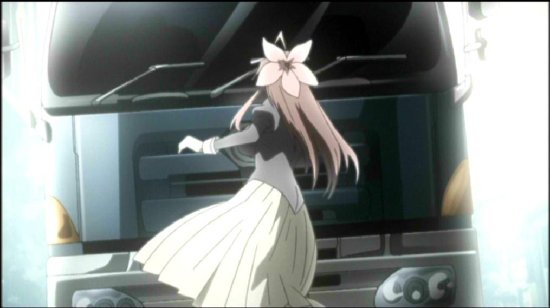
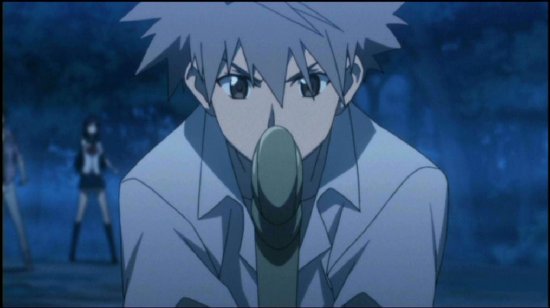
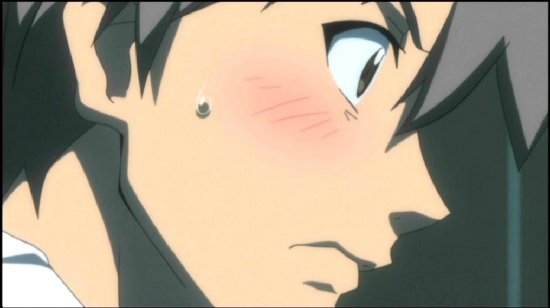
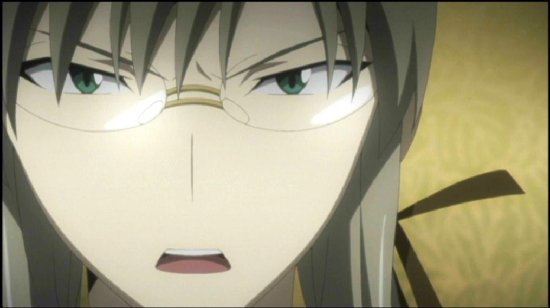
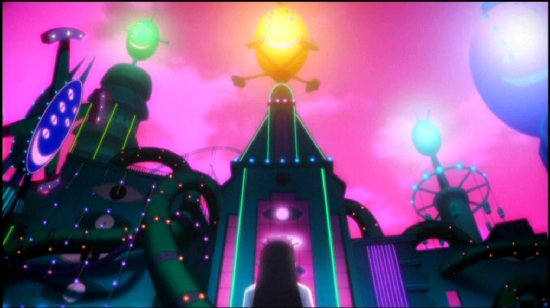
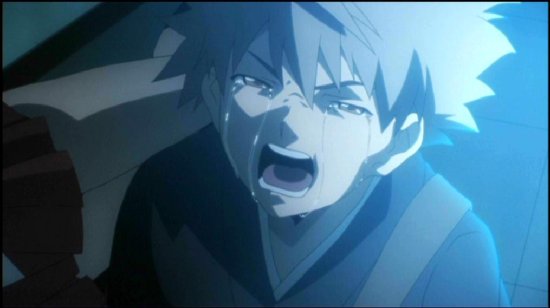
Your Opinions and Comments
Be the first to post a comment!